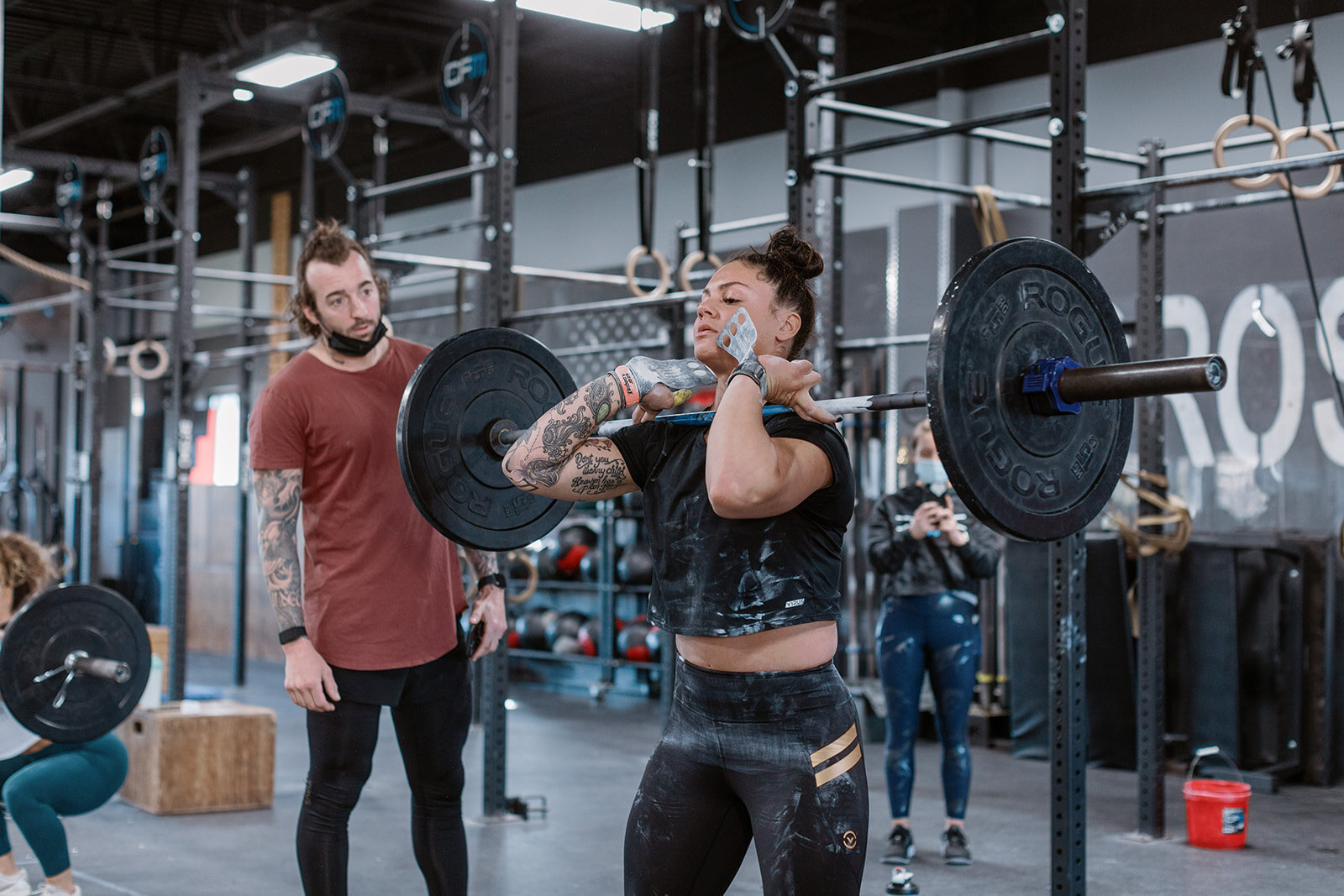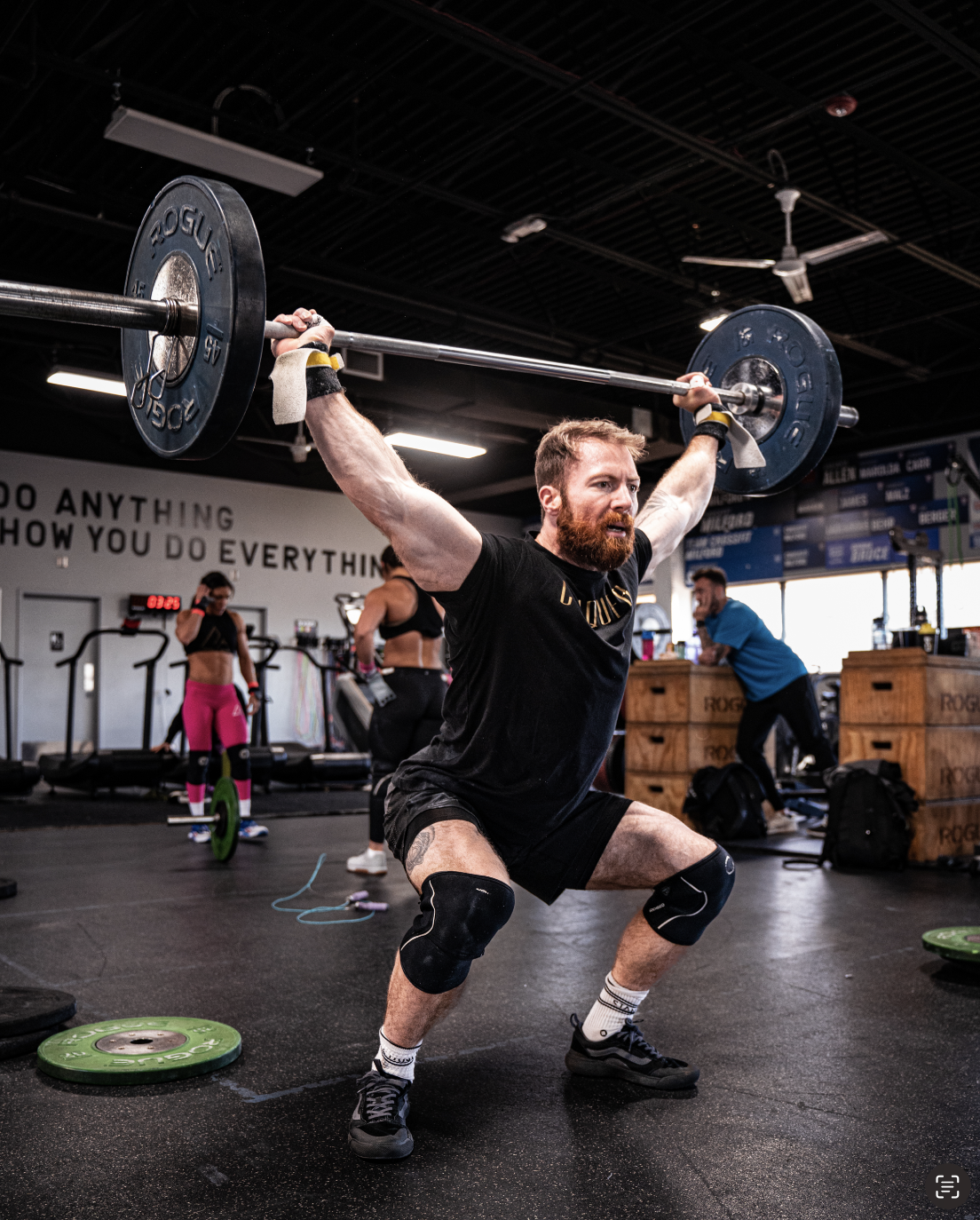
Conquer CrossFit Blog
Functional Fitness Tips, CrossFit News, & More
How to Have Grit When You’re Competing
When the lights hit, the music spikes, and your heart rate is already sitting 15 beats above baseline before the clock even starts—grit is what keeps you together. Not talent. Not hype. Grit. The willingness to stay present, keep pushing with intent, and solve problems when your lungs, legs, and ego are screaming to bail.
This isn’t motivational fluff. Grit is a skill set: a cluster of behaviors and mindsets you train, rehearse, and execute under pressure. Here’s how to build it and call on it when it matters most.
The Conquer Athlete Guide to Faster Progress for CrossFit & Masters Athletes
Older athletes face lowered anabolic hormones, slower collagen repair, and higher baseline stress. They therefore need an even sharper focus on sleep hygiene, protein timing, mobility maintenance, and parasympathetic activation through practices such as breathwork or meditation. Proper recovery converts training from joint-grinding punishment into forward momentum and longevity.
Fueling for Performance – How to Optimize Your Nutrition as an Athlete
When it comes to athletic performance, training gets most of the spotlight—but make no mistake, your nutrition is the foundation that supports every rep, every sprint, every recovery. You can have the best training plan in the world, but if your fueling strategy is off, you're leaving performance on the table. Over the years of coaching elite CrossFit Games athletes, pros, and everyday competitors, one thing has remained constant: those who eat with purpose, perform with power.
Read more about the key points I emphasize when coaching athletes on how to optimize their food for performance.
What Sets High Performers Apart — 10 Traits I See Over and Over Again
In my 20+ years of coaching, I’ve worked with some of the most elite individuals across sport and life—CrossFit Games athletes, military special operations, professional athletes, and high-level business performers. I’ve also worked with everyday people who operate at an extremely high standard, and you start to notice something after a while:
High performers move differently—not just physically, but mentally, emotionally, and behaviorally.
It’s not about talent. Not genetics. Not even just work ethic. It’s about character. The traits that are ingrained deep in their DNA—traits that show up when it’s hard, when no one is watching, and when the stakes are high.
Here are the 10 character traits I see time and time again in high performers.
Coaching With Intention
There’s a big difference between working out and training. I say this often, and I’ll say it again: a workout without purpose is just sweat. But a training session—when executed with clear intention and thoughtful design—is a step forward toward your goals.
At Conquer Athlete, we believe the magic of progress doesn’t lie in fancy programming or random intensity. It lives at the intersection of athlete understanding and coach precision.
Thriving in CrossFit and HYROX As A Masters Athlete
When your numbers refuse to budge, it isn’t willpower you’re missing—it’s a new stimulus. Strength plateaus happen because your nervous system has milked every drop of adaptation from the straight-set routine you keep repeating. Below are three evidence-backed ways to jolt progress back to life.Walk into any box on a Saturday morning and you’ll see it: a row of athletes who have mortgages, kids’ soccer games, and maybe a little gray at the temples—but they’re still hunting PRs like it’s 2009. I love coaching this crowd because they bring two priceless assets to the floor: life experience and a deep respect for smart preparation. Neither sport—whether it’s the chaos of CrossFit or the predictability of HYROX—makes concessions for age, so our programming can’t rely on shortcuts or nostalgia. We need training that honors physiology and ambition.
How to get stronger
When your numbers refuse to budge, it isn’t willpower you’re missing—it’s a new stimulus. Strength plateaus happen because your nervous system has milked every drop of adaptation from the straight-set routine you keep repeating. Below are three evidence-backed ways to jolt progress back to life.
Mental Resilience: The Missing Link Between Smart Programming and Sustainable Progress
Ask any seasoned strength and conditioning coach what separates athletes who peak once from those who progress for decades and you’ll hear one phrase on repeat: mental resilience. It’s the capacity to absorb pressure, re‑frame setbacks, and stay mission‑focused when training, life, or competition throws an unexpected curveball.
Addressing Energy Leaks
Maybe, you already possess the skills AND conditioning you need to be successful. However, you may have too many energy leaks that contribute toward your overall fatigue and expenditure – which prohibits you from expressing your true abilities.
Looking Holistically at Fitness
When you’re in your 20’s (or even younger), some things may not be as important for you to focus on, but as age, volume, and priorities change, it’s vital to take a look at the whole picture if you hope to continue down the path of progress.
The following elements all have a huge impact on your training, your improvement, and your longevity.
Thinking Long-Term
To maximize your athletic potential, long-term thinking has to be part of your mindset.
A big portion of that includes training smart, training consistently, and avoiding injuries.
Optimizing versus Adapting
For better or worse, the typical CrossFit athlete is focused on performance. How do I get a faster time or more reps? And in some instances, that can be a hindrance toward progression.
Training Approach for the Masters Brazilian Jiu-Jitsu Athlete
As you age, especially in the sport of Brazilian Jiu-Jitsu, you learn quite a few things. First, despite your age, you can still train extremely hard. Second, if you opt to do that with high frequency, you’re also looking at time away from the mat due to injury. So how do you find the balance?
All of it simply comes down to training smarter, not harder. With that in mind, here’s my take on training jiu-jitsu for the masters athlete.
How to Become a Better CrossFit Masters Athlete
This is single handedly the most prevalent question within the Sport of Fitness. Everyday I have this conversation, whether by phone, Zoom, or in person with aspiring athletes who are looking to progress up the proverbial CrossFit ladder. So, here I am going to build a framework around what I project (as of this day) are and will be the driving principles that will give you the tools to do well within CrossFit. This is not a manual that you can open and find a one, two, three step process. This is more of an outline around three guiding principles that will set you up for success to be a better CrossFit Masters Athlete.
Cultivating a Champion's Mindset for Master’s Athletes
Masters athletes, individuals who continue to compete in sports well into their adulthood, often face unique challenges as they strive to maintain peak physical performance while dealing with the demands of daily life. To excel in their chosen sport, especially such a complex and taxing sport like CrossFit, Masters athletes must not only focus on physical training but also develop a strong mindset. The saying, you cannot teach an old dog new tricks doesn’t hold true when you are talking about masters athletes. They are some of the most adaptable athletes out there, however, the mindset and mental approach to training and competing can be a new landscape if they haven’t come from a background of sport. So, below are a few ways masters athletes can work on cultivating a strong mindset.
How To Use Concurrent Periodization in CrossFit
CrossFit, known for its dynamic and diverse training approach, demands a combination of strength, endurance, agility, and more. To excel in this multifaceted sport, athletes need a training strategy that optimizes various fitness attributes simultaneously. This is where concurrent periodization comes into play. By blending different training components within a single training cycle, concurrent periodization empowers CrossFit athletes to enhance multiple facets of their performance.
W.I.N. - What’s Important Now
Whether you’re a coach being paid to help an athlete improve or an athlete looking for the next thing that's going to help you push the needle of performance, it’s easy to do what is popular or trendy right now.
To me, winning requires you to do the thing that you NEED to do, not the thing you want to do. Yes, there is balance between those two things, but the need needs to outweigh the want.
CrossFit Games Update: CrossFit Milford Team Conquer
In the world of CrossFit, the ultimate test of fitness and athleticism is the CrossFit Games. Athletes from around the globe converge to push their physical and mental limits, striving for greatness and the title of "Fittest on Earth." Our journey to the CrossFit Games was one of perseverance, dedication, and teamwork, culminating in a remarkable achievement: our team's 13th place finish in the world.
Maximizing the Combat Sport Off-Season
Though many sports have a traditional off-season, combat sports are the exception. The time between fights can be unpredictable, making it difficult to plan in a macro cycle approach.
Typically, during “down time” the focus shifts toward skill acquisition with lower intensity to promote more frequent sessions so the athlete can improve significantly between fights.
One aspect that shouldn’t be overlooked at this time is the development of aerobic capacity/endurance.
5 Fun and Effective Ideas for Long-Term Habit Change
Creating long-term habits can be a daunting task, but it doesn't have to be a boring one! Whether you're looking to ditch bad habits or adopt new, positive ones, the journey to lasting change can be enjoyable and rewarding. In this article, we'll explore five light-hearted and fun ideas that can help you make lasting changes to your habits.



















